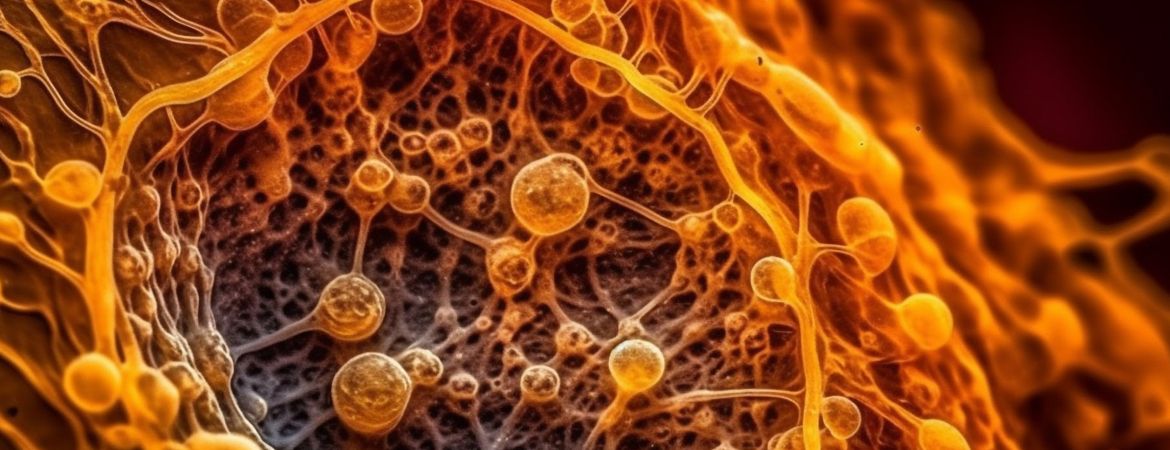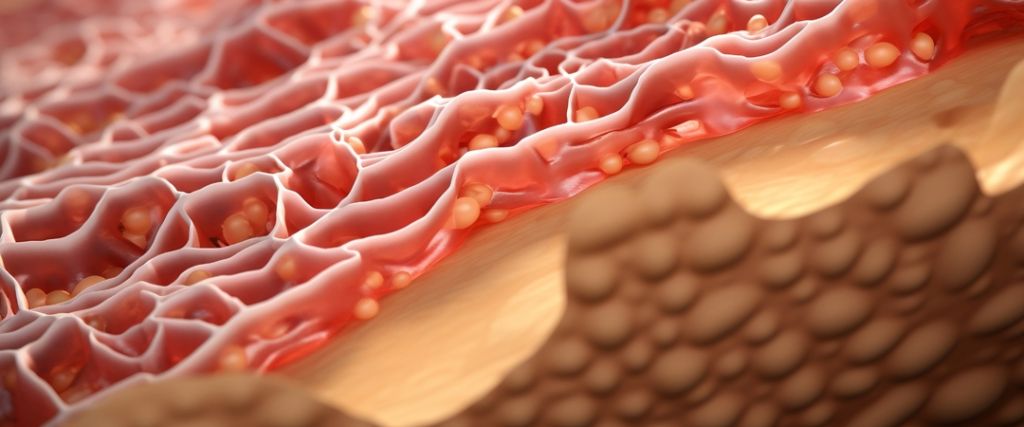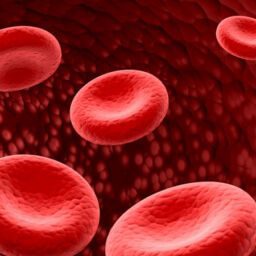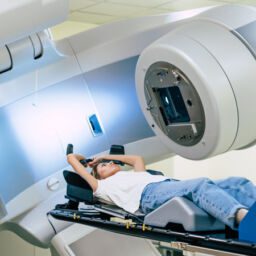
Liposarcoma: Understanding a Rare Cancer
Liposarcoma, though rare, is an aggressive form of cancer that demands our full attention. Primarily affecting fatty tissues, this cancer can develop in various parts of the body, making its diagnosis and treatment complex. Often confused with other types of tumours, liposarcoma presents subtle symptoms that can delay early detection. In this article, we will delve into the heart of this little-known pathology, explaining its types, potential causes, and associated risk factors. Furthermore, we will explore the latest advancements in liposarcoma treatment, including innovative options that are changing the game for patients. Understanding this rare disease is essential to raising public awareness and encouraging continuous research, while offering new hope to those affected. Stay with us to learn more about this fight against cancer and how to improve patients’ quality of life.
What is Liposarcoma?
Liposarcoma is a rare type of cancer that originates in the fat cells, or adipocytes, of the body. Unlike benign tumours that can also form in fatty tissue, liposarcoma is malignant and has the ability to spread to other parts of the body. This cancer is typically diagnosed in adults, although it can also affect children. Liposarcomas often develop in the body’s soft tissues, particularly in the limbs, abdomen, and retroperitoneal region, but they can form anywhere there are fat cells.
Liposarcomas are often classified based on their microscopic appearance and biological behaviour. These classifications help doctors determine the prognosis and appropriate treatment for each patient. Due to their rarity, liposarcomas represent a significant challenge for oncologists, as they require specialised expertise to be correctly identified and treated. Approximately 1% of cancer cases are liposarcomas, highlighting the importance of awareness and research to improve outcomes for patients with this disease.
It is important to note that liposarcomas can vary considerably in terms of growth and aggressiveness. Some may grow slowly and remain localised, while others can develop rapidly and metastasise. This diversity in liposarcoma behaviour makes accurate diagnosis and adequate patient stratification crucial for determining the most effective treatment plan.
The Different Types of Liposarcoma
There are several types of liposarcomas, each with distinct characteristics that influence treatment and prognosis. The four main types of liposarcoma are well-differentiated liposarcoma, myxoid liposarcoma, pleomorphic liposarcoma, and dedifferentiated liposarcoma. Each of these types exhibits different clinical behaviours and requires specific treatment approaches.
Well-differentiated liposarcoma is the most common and least aggressive type. It consists of fat cells that closely resemble normal cells, making it less likely to spread to other parts of the body. However, it can still grow locally and cause problems by compressing surrounding structures.
Myxoid liposarcoma, on the other hand, is characterised by a gelatinous matrix surrounding the tumour cells. This type of liposarcoma has a higher potential for metastasis, particularly to the lungs and other soft tissues. Pleomorphic liposarcoma is rare and highly aggressive, with cells that show a wide diversity of shapes and sizes, making its treatment particularly challenging. Finally, dedifferentiated liposarcoma is a more aggressive form that can evolve from a well-differentiated liposarcoma and exhibits behaviour similar to that of pleomorphic liposarcoma.

Symptoms and Diagnosis of Liposarcoma
The symptoms of liposarcoma can vary depending on the location and size of the tumour. Often, the initial signs of the disease are subtle and may go unnoticed or be mistaken for other less serious conditions. Patients may notice a lump or swelling in a part of the body, which may or may not be painful. In some cases, the tumour can grow large enough to compress nearby organs or nerves, causing symptoms such as pain, weakness, or loss of function in the affected area.
The diagnosis of liposarcoma typically begins with a physical examination and a detailed medical history. Medical imaging, such as MRI (magnetic resonance imaging) and CT scans (computed tomography), plays a critical role in detecting and characterising tumours. These techniques help visualise the size, location, and extent of the tumour, aiding doctors in planning the biopsy and treatment.
A biopsy is essential to confirm the diagnosis of liposarcoma. This involves taking a tissue sample from the tumour for histopathological analysis. Pathologists examine the cells under a microscope to determine the type of liposarcoma and its level of malignancy. This step is crucial as it guides treatment decisions and helps establish a prognosis for the patient.
Risk Factors and Possible Causes
The exact causes of liposarcoma are not fully understood, but several risk factors have been identified. Age is one of the primary risk factors, with most cases occurring in adults over 50. However, liposarcomas can also develop in young adults and, more rarely, in children. A family history of soft tissue cancer may also increase the risk of developing liposarcoma, although this type of cancer is not typically considered hereditary.
Exposure to certain chemical agents and ionising radiation has also been linked to an increased risk of liposarcoma. For example, individuals who have undergone radiotherapy to treat another cancer may be at higher risk of developing liposarcoma in the irradiated area years later. Additionally, occupational exposure to chemicals like herbicides and industrial solvents may contribute to the development of the disease.
Lastly, certain pre-existing medical conditions, such as rare genetic syndromes like Li-Fraumeni syndrome and Werner syndrome, can predispose individuals to various types of cancer, including liposarcomas. Understanding these risk factors is essential to identifying high-risk individuals and implementing appropriate monitoring and prevention strategies.
Treatment Options for Liposarcoma
The treatment of liposarcoma depends on several factors, including the type of liposarcoma, its location, size, and stage at the time of diagnosis. Treatment options include surgery, radiotherapy, chemotherapy, and targeted therapies. Each approach has its advantages and drawbacks, and treatment is often personalised to meet the specific needs of each patient.
Surgery is typically the first-line treatment for localised liposarcomas. The goal is to completely remove the tumour with clear margins to minimise the risk of recurrence. In some cases, surgery can be complex due to the tumour’s location and its interaction with surrounding anatomical structures. As such, specialised surgical expertise is often required to achieve the best possible outcomes.
Radiotherapy may be used before or after surgery to shrink the tumour or eliminate any remaining cancerous cells. It is particularly useful in cases where surgery alone cannot fully remove the tumour. Chemotherapy, although less effective for certain types of liposarcomas, can be used to treat more aggressive forms or metastatic tumours. Targeted therapies, which focus on specific molecules involved in tumour growth, offer a promising approach for patients with liposarcoma.
Recent Advances in Liposarcoma Research
Recent progress in liposarcoma research has opened new pathways for the treatment and management of this complex disease. One of the most significant advancements is the improvement in molecular diagnostic techniques, which allow for more precise tumor characterization. These techniques use genetic and proteomic analyses to identify specific molecular alterations driving tumor growth, helping to guide the selection of targeted therapies.
Targeted therapies represent another major breakthrough in the treatment of liposarcoma. These drugs are designed to attack specific proteins or signaling pathways involved in cancer cell proliferation. For example, MDM2 and CDK4 inhibitors have shown promising results in clinical trials for certain types of liposarcomas. These targeted treatments provide an alternative for patients who do not respond to conventional therapies and may improve clinical outcomes.
Research into immunotherapy, which stimulates the patient’s immune system to attack cancer cells, is also underway for liposarcoma. While preliminary results are encouraging, further studies are necessary to assess the effectiveness and safety of these approaches in the context of liposarcomas. These advancements highlight the importance of continued research and innovation in the fight against this rare form of cancer.


Challenges in Treating Liposarcoma
Treating liposarcoma presents several unique challenges due to the diversity of tumor types and their varied biological behaviors. One of the main obstacles is the difficulty in obtaining an accurate and timely diagnosis. Because of the rarity of the disease and the similarity of its symptoms to other conditions, liposarcomas are often underdiagnosed or diagnosed late, which can limit treatment options and impact patient outcomes.
Managing recurrences is another major challenge in treating liposarcoma. Even after complete surgical resection, the risk of local recurrence or metastasis remains high for certain types of liposarcomas. This situation requires regular monitoring and repeated therapeutic interventions, which can be exhausting and stressful for patients. Developing more effective strategies to prevent recurrences is therefore a critical area in improving long-term outcomes.
The side effects of current treatments, including surgery, radiation therapy, and chemotherapy, also pose significant challenges. These treatments can lead to complications such as infections, chronic pain, mobility issues, and a reduced quality of life. The development of less invasive and better-tolerated therapies is essential to provide patients with safer and more effective treatment options.
Resources and Support for Liposarcoma Patients
For patients with liposarcoma, access to adequate resources and support is essential for managing the disease and improving their quality of life. Several organisations and support groups offer information, advice, and practical assistance to patients and their families. These resources may include information on treatments, clinical trials, patients’ rights, and guidance for coping with the emotional and psychological aspects of cancer.
Patient associations, such as the Sarcoma UK or the Association des malades du cancer (AMC) in Tunisia, play a crucial role by providing up-to-date information on research progress and treatment options. They also organise events and support groups to allow patients to share their experiences and support one another. These associations advocate for better patient care and for increased funding for sarcoma research.
Psychological and social support services are also important in helping patients cope with the stress and anxiety related to the diagnosis and treatment of liposarcoma. Psychologists, social workers, and specialist oncology counsellors can offer individual consultations and group therapies to help patients find coping strategies and maintain their emotional well-being. Furthermore, rehabilitation and pain management programmes can help improve patients’ quality of life by providing them with tools to manage the side effects of treatments.
Conclusion and Future Outlook for Liposarcoma Treatment
Liposarcoma, though rare and complex, is a disease that requires ongoing attention from the medical and research communities. The progress made in diagnostic techniques, targeted therapies, and innovative approaches offers new hope to patients. However, many challenges remain in improving survival rates and the quality of life for those with liposarcoma.
Continued research is essential for discovering new therapeutic targets and developing more effective and less invasive treatments. Clinical trials play a crucial role in this process, allowing for the evaluation of the efficacy and safety of new treatments. It is also important to strengthen collaboration between researchers, clinicians, and patients to accelerate the translation of scientific discoveries into clinical practice.
Furthermore, public awareness and patient support must remain priorities. By increasing the visibility of liposarcoma and providing adequate resources, we can help diagnose the disease earlier, improve care, and offer emotional and psychological support to patients and their families. Together, we can continue to make progress in the fight against this rare cancer and offer a more promising future for those affected by it.








